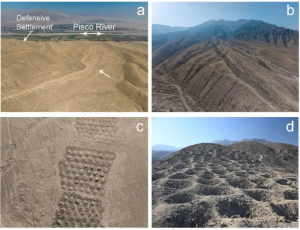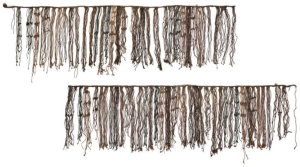Mystery of Peru’s Ancient Mountain Holes May Finally Be Solved
Archaeologists believe they’ve uncovered the purpose behind one of Peru’s most enigmatic sites – thousands of stone-lined holes covering a mountainside in the Andes. New evidence suggests Monte Sierpe served as a pre-Inca marketplace that later evolved into a massive accounting system.
Key Findings
- Drone mapping revealed numerical patterns in the hole arrangements
- Soil analysis uncovered ancient maize pollen and reed evidence
- The layout resembles Inca khipu accounting devices
- Site may have been a trading hub for 100,000 people
Decades of Mystery
Known as Monte Sierpe (Serpent Mountain), this unique archaeological site first gained attention in the 1930s through National Geographic aerial photographs. For nearly a century, researchers speculated about its purpose, with early theories suggesting unused pre-Inca graves.
Groundbreaking Research Methods
Using drone technology, the research team mapped the site and discovered intentional numerical patterns in the hole layouts. Surprisingly, the arrangement closely matches the structure of Inca khipu – ancient knotted-string accounting devices found in the same valley.
Soil analysis provided crucial evidence, revealing ancient maize pollen and reeds traditionally used for basket-making. “Our unexpected findings importantly indicate that people deposited plants in the holes, using woven baskets or bundles,” the researchers noted.
Marketplace Theory Emerges
Lead researcher Dr. Jacob Bongers from the University of Sydney explained the compelling evidence: “Why would ancient peoples make over 5,000 holes in the foothills of southern Peru? Were they gardens? Did they capture water? We don’t know why they are here, but we have produced promising new data.”
The soil analysis proved particularly revealing. “Perhaps this was a pre-Inca marketplace, like a flea market,” Dr. Bongers suggested. “We know the pre-Hispanic population here was around 100,000 people. Perhaps mobile traders, specialists, and others were coming together to exchange local goods such as corn and cotton.”
From Trading Hub to Accounting System
Dr. Bongers views the holes as “a type of social technology that brought people together, and later became a large-scale accounting system under the Inca empire.” This transformation suggests the site’s function evolved over time, potentially serving multiple purposes across different eras.
Despite these breakthroughs, mysteries remain. “Why is this monument only seen here and not all over the Andes? Was Monte Sierpe a sort of ‘landscape khipu’?” Dr. Bongers wonders, adding that researchers are “getting closer to understanding this mysterious site.”
The findings, published in Antiquity journal, represent significant progress in understanding and their sophisticated systems of organization and trade.







